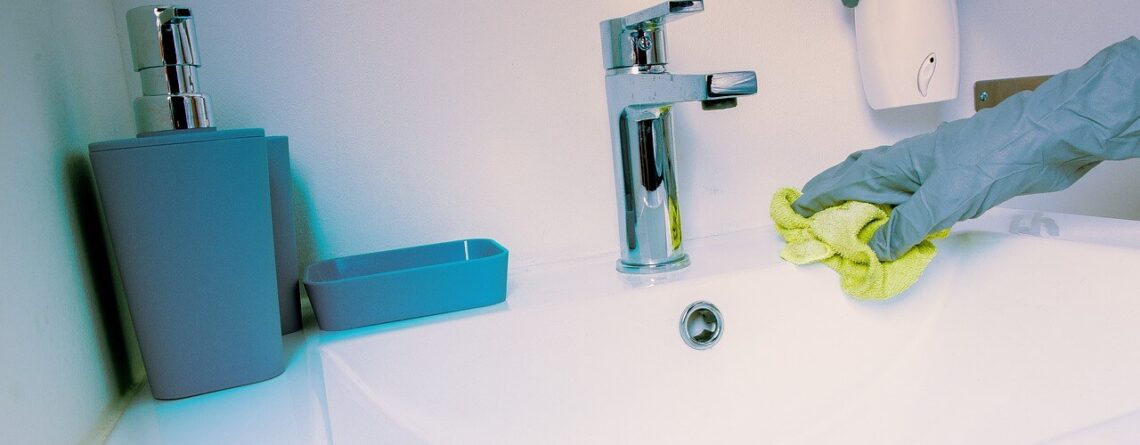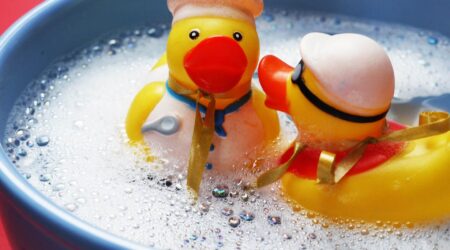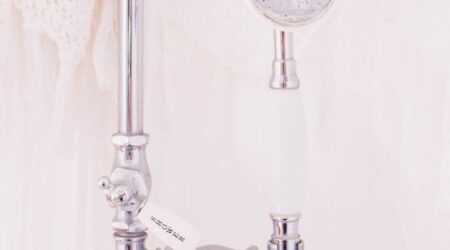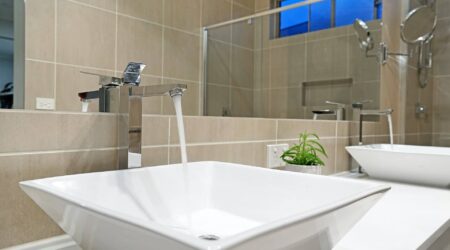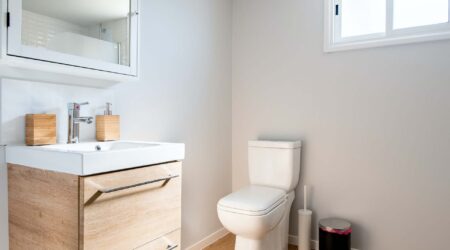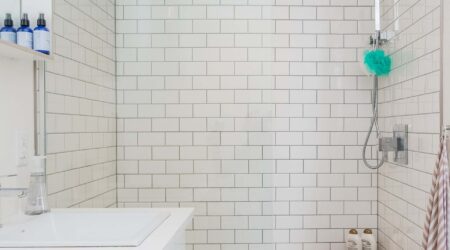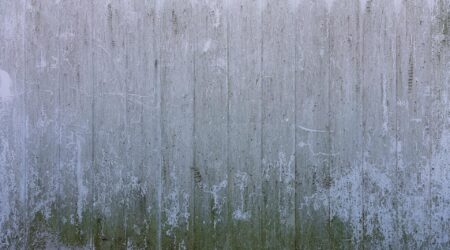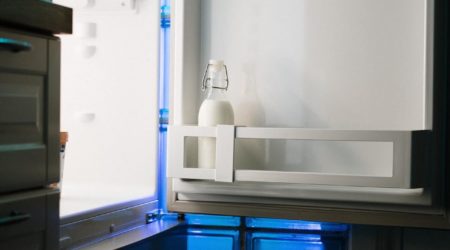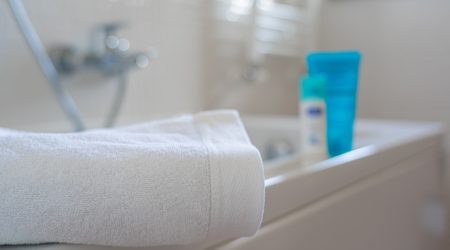How To Clean Mold In The Shower
Mold thrives in moist, warm, and dark areas such as your toilet and shower.
Under favorable conditions, mold can easily grow on your shower fixtures, bathtub, and caulking.
Aside from being unsightly, mold buildup in the shower also smells musty.
Mold can weaken the integrity of your drywall and ceiling.
If you don’t remove mold on your shower area, you may be up for higher repair costs in the future.
Additionally, constant inhalation of mold is not good for your health.
So, go check your bathroom tiles, grout, showerheads, and fixtures now for mold.
If there is, it’s time to allocate about an hour for cleaning.
If you’re wondering how to clean mold in the shower, we have a step-by-step guide for you.
This article will help you effectively get rid of molds in various areas in your shower.
We will also help you prevent mold from resurfacing again.
How To Remove Mold From Bathroom Ceiling
Mold grows well on your bathroom ceiling.
The warm steam rising from your shower makes it favorable for mold spores in the air to put down roots.
And since the drywall in your ceiling is porous, the roots of the molds can grow deeply.
We do not recommend you use bleach on your moldy bathroom ceiling.
Bleach will only kill the surface molds but it will leave the mold beneath the surfaces unharmed.
Thus, regrowth is highly likely.
Also, the damage due to mold expanding beneath the surface could be worse.
Instead of bleach, try using vinegar instead to kill the mold.
Follow these instructions to properly wipe the mold off your ceiling.
- Determine the source of the moisture. Is it a leaky pipe, window, roof, or the water from your bathroom? Fix the leaks or install an exhaust or dehumidifier to minimize the humidity and heat.
- Turn off your bathroom ventilation to prevent spores from spreading. Vacuum loose spores.
- Clean the area with dish soap and warm water. Gently scrub the affected surface to remove the mold spots.
- Rinse with a clean cloth.
- Put undiluted white vinegar in a spray container.
- Spray generously on the moldy area and let the vinegar sit for a few minutes.
- Scrub the area to clean the mold.
- Rinse and wipe with a clean rag.
- Let the surface dry out completely.
How To Get Rid Of Mold In Shower With Vinegar
White vinegar is a common kitchen item that’s also popularly used as an all-purpose cleaner.
It not only gives surfaces a squeaky clean look, but it also kills bacteria and fungi.
Because of this, vinegar is one of the first items of choice for cleaning mold in the shower.
- Make sure that you’re wearing protective equipment like goggles, gloves, and a face mask.
- Vacuum the moldy parts to collect all the loose spores.
- For your shower tiles, heads, and fixtures, you can use a bleach solution. Simply mix water and bleach in a 1:2 ratio and place the mixture in a spray bottle.
- Spray the moldy surfaces of your shower and let the solution sit for about 5-10 minutes.
- Rinse the solution with a clean cloth.
- If there is stubborn mold, repeat the process and use a brush to scrub the mold away.
How To Remove Mold From Shower Grout
Grout is the gaps in between your shower tiles.
This material is porous and so mold can be deeply rooted into your shower grout.
Nevertheless, it’s something that can be solved by white vinegar.
- Mix equal parts of vinegar with equal parts of water. Place the solution in a spray bottle for easy cleaning.
- Spritz your moldy grout with the solution and let it sit for a few minutes.
- Use a toothbrush or small brush to scrub the mold on your shower grout.
- For stubborn mold, create a baking soda paste. Mix vinegar and baking soda in a 1:2 ratio until you create a thick paste.
- Apply the mixture to the stain and let it sit.
- Use a brush to get rid of the fungal growth.
- Rinse with a clean cloth and let the area dry thoroughly.
How To Remove Mold From Shower Caulking
Another area in your shower that gets moldy over time is the caulking.
Icky black mold can grow on the silicone caulking, making your shower look disgusting.
If you notice mold thriving on your shower caulk, here’s what you have to do:
- Vacuum the area to suck up the dust and loose spores.
- Create a mixture of liquid bleach and water in the ratio of 1:10 and put it in a spray container.
- Spritz the solution on your shower caulking and leave it on for 10-20 minutes.
- Use a soft-bristled brush to clear the caulk of any mold and spore.
- Rinse your shower caulking with a clean, wet towel and let it dry.
The best way to stop your shower from mold damage is to prevent its growth.
Always keep your shower area clean and dry.
If you notice a spot of mold, clean it immediately with homemade solutions.
This will prevent mold from growing and expanding.
Bathrooms tend to accumulate dirt over time.
With constant moisture and exposure to other elements, other organisms slowly build up.
Microorganisms like bacteria and viruses can survive inside the shower.
Dirt particles stay in unclean showers.
However, there’s one thing that naturally grows in moist places.
Molds are among the most common microbes that grow in the bathroom.
Homeowners aren’t strangers to growing molds.
Before it starts affecting the health of your home, you need to clean out molds.
Don’t worry, as there are plenty of ways to do this.
You won’t lack methods to clear molds in the shower and crevices of your bathroom.
Clear molds off the most common places it thrives inside the shower.
Let this guide help you on how to clean mold from a shower.
Shower caulking
Caulk is a product that comes in tubes of filler sealants like pure silicone or acrylic.
The shower caulking seals spaces and corners in the bathroom.
Most likely, multiple tiles make the walls and floors of the shower.
Check for the angular seams of the shower area.
You will find a line of caulk that covers the meeting point between angled tiles.
Molds grow in lines of shower caulking from constant moisture in the shower.
As general cleaning rarely reaches fine lines of caulk, black molds thrive in the shower.
Cleaning molds in the caulking involves deep cleaning fine spaces between shower fixtures and tiles.
So, how do I clean black mold in shower silicone?
- Prepare a bleach solution or product for bathroom cleaning.
- Get a sponge and soak in the liquid bleach in the sponge.
- Scrub caulk lines and leave them for 20 minutes to take effect.
- Rinse off the bleach.
Tile grout
Many often interchange caulking and tile grout as adhesives for bathroom use.
As caulking is mostly on angled joints, grouts are in between flat tile spaces.
Grouts tend to shave off or crack over time after prolonged use and water exposure.
Over time, you will end up with some tiles that lack grout between spaces.
The molds start to grow in spaces and fill the spots where grout comes off.
It’s particularly challenging to clean molds off a grout since spaces are too narrow.
You’ll need proper tools to dig out molds on the crevices between tiles.
Natural substances can take out the molds with a thorough application.
For example, vinegar can kill growing black molds in tile grout.
The question is, how to get rid of mold in the shower with vinegar effectively?
- Prepare a spray bottle of vinegar. If the vinegar is too strong, make a diluted solution. Mix equal parts of vinegar and warm water to form a solution.
- Pour or spray the solution in between the tiles.
- Leave the area for 20 to 30 minutes.
- Using a thin brush or a toothbrush, scrub the grout between the tiles.
Bathroom ceiling
The bathroom ceiling is one of the most challenging parts to clean inside the bathroom.
It’s an elevated part of the bathroom.
It’s dangerous to climb on high spaces in the ceiling.
A lot of effort is necessary for a thorough clean.
It’s best to clean the bathroom ceiling with somebody else for an extra pair of hands.
It’s best to apply prevention beforehand to the bathroom ceiling.
Instead of tackling black molds growing in high ceiling space, use preventive solutions.
Lessen the possibility of molds growing in inaccessible areas like the ceiling.
Apply methods that inhibit the growth of molds.
- Ensure that the bathroom and the shower are dry. Have an extendable brush or wall and ceiling mop.
- Get a shower mold prevention spray. Spray the product to a brush or ceiling mop.
- Apply the solution to the ceiling. Don’t forget the corners and crevices where molds usually start to grow.
- Leave the door open to dry the product faster on the ceiling of the shower.
Bathroom walls
Bathroom walls make the most surface in the shower.
As a result, it’s usually the part of the bathroom that accumulates moisture.
Keeping the bathroom walls dry prevents microbes from growing in the shower.
The build-up usually happens in edges and angled corners inside.
Molds and grime accumulate in some areas of bathroom walls.
Take care of the bathroom walls to keep the surfaces clean.
In cases of mold growth, walls are often one of the simplest surfaces to clean.
The issues only arise with the misapplication of products on the walls.
There’s always an optimal way to deal with molds in the bathroom walls.
So, how to remove mold from bathroom walls properly?
- Ventilate the bathroom first to keep it in a dry condition before mold removal.
- Get a mold remover solution or make a natural mold remover by yourself. For a diluted cleaning solution, mix equal parts of warm water and vinegar.
- Using a spray bottle or a clean rag, apply the solution to the bathroom wall.
- Leave the area for about 30 minutes to an hour. Make sure that the shower is open or well-ventilated to dry faster.
Conclusion
There are many ways on how to clean mold from a shower.
Mold removal products help in targeting stubborn microbes.
Moreover, you aren’t limited to commercial items.
Natural methods like vinegar solutions can eliminate mold growth in the shower.
The important part is keeping the shower safe from the harmful health threats of molds.
Find more useful guides and how to’s on MaidFeed.com, your everyday cleaning guide.

